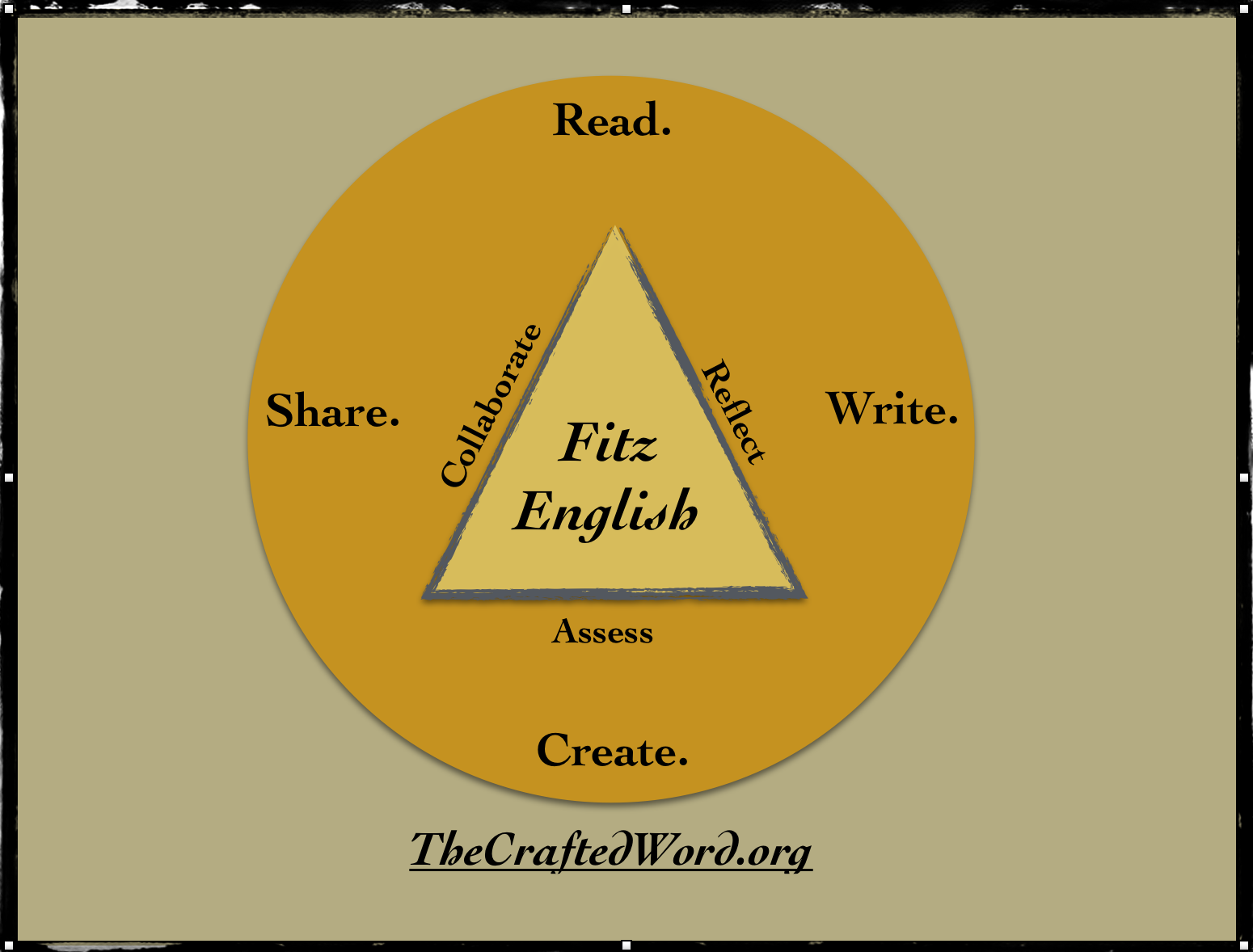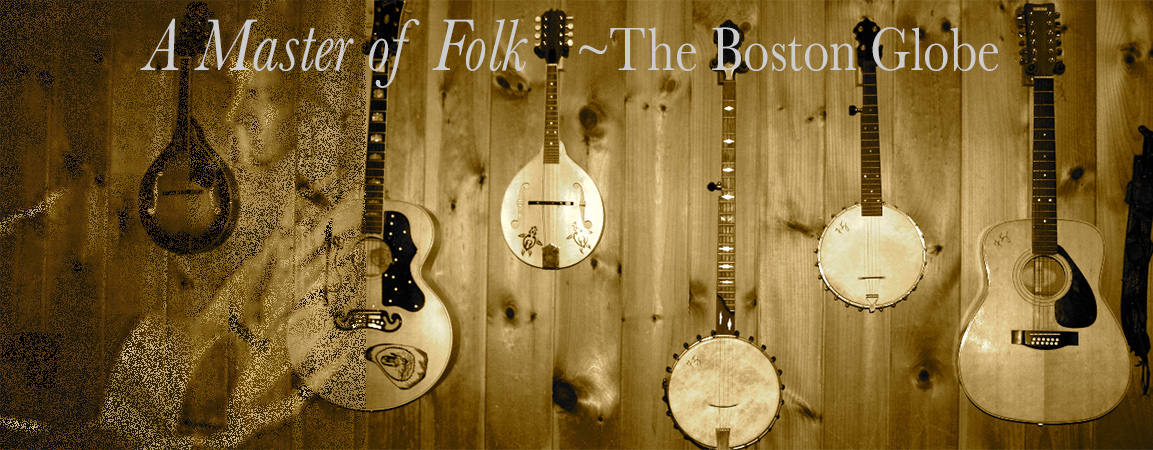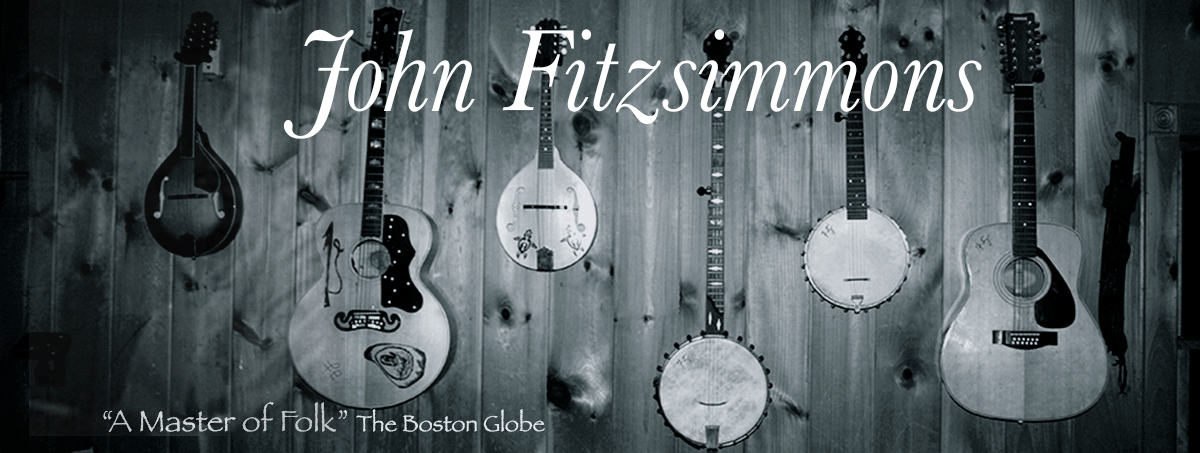
by Fitz | Jul 23, 2015 | Essays, Journal, Teaching
I
 The dull staccato throb in light rain on a dark night. Unseen barges make their way up the QianTian River—concrete shores marked by the arch of the bridge, the spans of beam stretched on beam, the impeccable symmetry of the street-lights broken by a stream of impatient headlights—the bursting aorta of commerce and hope that is Hangzhou.
The dull staccato throb in light rain on a dark night. Unseen barges make their way up the QianTian River—concrete shores marked by the arch of the bridge, the spans of beam stretched on beam, the impeccable symmetry of the street-lights broken by a stream of impatient headlights—the bursting aorta of commerce and hope that is Hangzhou.
Or is it the torrent of humanity flowing east and west and north and south around the antiquities of West Lake? Lovers. Couples in every configuration and every intent. Families dragging or being dragged. Packs of friends so hip and cool and daring. So much unlike the China I remember. Soft wool coats: blue or gray. Mao buttons and short-visor caps. I fall just as easily into reverie as anticipation.
The grey fog and swirl of mist on West Lake outlines the rowing prams and party boats decked in imitation of palaces lost to time. On a far hillside—a bare shape of a gray palace on a gray background. Somewhere within: the lusty cries and plaintive words of crazy Li Po, drunk again and strewing words with a practiced and meticulous abandon—picked up by stooped bodies and weathered visages carried and thrown with feral joy—skipping stones stretched across still waters. Heavy, fluttering weight borne down by inescapable gravity.
Right now I am happy to my bones and as lonely and weak as a man can be. I scroll through pictures of my family and share them with the sky which seems heavy enough to fall—the dirt and smoke and smell of progress. Each picture tugs at my heart. I am not built to be away from home—Tommy scales a rock wall. Emma plays her ukulele. Margaret her guitar. EJ fixes his VW. Charlie juggles a soccer ball. Kaleigh collects seashells and beach glass. Pipo washes enormous pans in the camp kitchen. Denise sits in the backyard—our blessed perfect backyard—holding a chicken. I cling to them as wildly as wild can be. I will dare anyone. Any time. It is not a test I need to prepare for.
The craziness is in the contrast: this city of millions and millions and millions sprouting steel and glass and brick in every configuration of a weedy architect’s dream. I should be happy to be here, but I long for the simplicity of my back porch. Morning coffee with Denise. Kids busy. Friends who call. A slow jog. A bulb that needs to be changed. Only a fool would argue with me.
Jet lag wakes me in the middle of the night. I read Joyce for an hour. Is my head Dadelus or Bloom? It is too easy to confuse work of the head with work. Real work. Whatever it is that I need sleep for? Dave and Rob are still asleep. Long in jealous sleep. Or maybe like me—eyes wide-awake, curious if the sun ever shines in this city? Maybe stuck in fogged memories brushed in Song Dynasty waterstrokes. Rounded bellies surrounded by calligraphy’d words. China is not a country that etched its history on cave walls. Everything flows and dies and recreates itself in an unending cycle of births measured in massive ticks of time. For me and Dave and Rob at least: three days of incessant rain, mist and curiosity; still, I am a silent claw scuttling across the floors of a silent sea.
Yet we laugh as much as men have always laughed at the vagaries of fate in this country which seems to have created the word. We are ecstatic with our luck to be here. We scrounge like beggars for coffee in the morning. We force ourselves into taxis like hobo’s stuffing rucksacks. We teach the new elite of China: sons and daughters of scion and opportunity. Kids only, and no different, as if God only has three or four molds to work with: here is your intense child; here is your dreamy child; here is the child hobbled by a dull mind nurtured in like-minded fanaticism by parents deluded by assumptions of perfection, and here is the kid of the world—the ever-real world—the everywhere world: give me love; give me hope; give me joy; give me space. Save me from yourselves.
We work alongside the young and restless who are torn by conviction and inclination. The young who are prey to vanity, pretence, boldness and unplumbable magnanimity in equal measure. We call them by English names chosen in blithe randomness: this sounds good—I like this name—this is easy to remember—many famous people are named Richard. I want to scream and say that we are not so lost that we can’t remember the tongue-twisters of our youth. It is as easy for us to say to say that one sly snake slid up the stake and the other sly snake slid down as Liu Guo Ping or Ren Qi Wei or Sun Zhu. I like your name. I want your name. Your real name. There is no other way to begin.
Just tell us your name! and maybe the BBC won’t report every day on the gulf between us, on what our misunderstandings are, or on how we need to understand history. We are all ignorant, damn it, in every way, yet we are transcendent in every moment—if given the chance. I don’t want to meet another ex-pat who has been here for three years—or five years—or ten years, for they have nothing to tell me but their story, and as perfect and real as that story may be, I will measure that story against their own ignorance—and then we are surprisingly equal. I need to know that the wisdom of my backyard is as expansive as any unboundaried world. If not, why seek peace? It is unattainable. We do not need travel to suffocate bigotry. We only need to love and accept one thing that is not ours and build from there.
The young teachers from the school where we are working, Arvin, Angie, Addie and Ray, walked us around West Lake tonight—a quartet of twenty-somethings that seems to be the pillars of the new China: modern, ancient, vulnerable, and impertable. Arvin, in almost manic ecstasy, tells story after story of the history, the meaning, and the reality of every turn of the path in spontaneous bursts of every language he knew. Angie and Addie and Ray recreate the meaning, but not the ecstasy, blessed and cursed as they are by the temperance of defined lives.
We feast in some palace by the shore. Table after table full of men doing small shots of incredibly strong liquor—standing like warriors around a magnificent table. Sometimes a table of their wives locked in the chatter of tradition. Sometimes a table like us: a few friends; a few guests, and toasts and laughs in a broken dance of broken language cobbled into some kind of understanding. It almost felt like defiance, a changing of the guard. Sit with your wives, dammit! Yet, I was jealous of their camaraderie of tradition. We men barely change.
We watched a Chinese opera performed on the waters, sitting in the pouring rain surrounded within a sea of flimsy blue poncho’s. I loved my poncho, for it made me as Chinese as the rest of the crowd—my blue tarp like their blue tarp. My Mao jacket and their mao cap. I almost wanted to gasp like the crowd at every cool shift of scenery—of tens of feathers running across the water top—of lovers floating on ancient barges never quite touching prows—of ominous risings and fallings of girded columns of steel rising out of the waters of West Lake. Instead I squinted like an engineer to figure out the mechanism of reality that made people gasp. I regret that this always been my fallback to keep me from the lure of wonderment. I wanted to be lost in amazement, yet I was only gifted by the delight of engagement and deconstruction—the lost twin of faith.
Tonight, like everything, did not end: it was truncated by everything that truncates. It is absurd that I am still awake. Wisdom and experience plead with me to let go of the night, but I can’t, because louder than wisdom of experience is the voice of Li Po. The poet’s guttural cry croaked infinatum. Not unlike the barges—some conveyance I don’t see— a sound, merely, in a gray night, but I feel the dull, throbbing, staccato notes—the predictable heartbeat of a diesel reassurance lurching into the strong, moiling, and unceasing flow of tomorrow.
A tomorrow that is already here.

by Fitz | Mar 1, 2015 | Essays, Journal, Teaching
A literary reflection to my students…
The lowering for whales, the appearance of Fedallah’s crew, the vivid descriptions of the first chase in a sudden and unrelenting gale, the fatalistic joy of resigning oneself to fate, the awesome poetic intensity of Melville’s prose—the intermixing of the mundane with the profound and metaphysical, balancing historical accuracies with inner musings on motives and aspirations all make for a compelling read in chapters 42-51.
There is nothing to get but the sublimity of the experience. These are words that must be read–and perhaps reread many times–to appreciate the accumulating power. To become lost by and in the words of Moby Dick is to be lost in the briny mix of our own lives. I read and my mind wanders and seeps into my own life with its mix of romantic dreams lost in the colder harshness of everyday reality.
I have to let myself be pulled and borne by the power of the sea and the maniacal focus on desire, for somewhere in us is the monomania of Ahab equally balanced by the stoic sense of purpose of Starbuck, the self-abnegating and joyful acceptance of fate in Flask and Stubbs, the sheer wonderment and astonishment of Ishmael to simply be there, the visceral and primal wisdom of Queequeg, and the crazy interplay and intermixing of the crew in their universal worldliness and embrace of a common vision—and Moby Dick, the ubiquitous beast, dream, nightmare, and reality that courses through the pulsing aorta of the narrative.
This reading is not and should not be a chore. It is the adventure itself, and a hard and tasking adventure it is that you are tackling day and day out, no less than the crew itself, for the Pequod is, through better and worse, our classroom and our teacher, and we must all stand watch on the mastheads and scan for distant spouts on a vast horizon even, like the mysterious Fedullah, on nights lit only by the sliver of a moon–framed against the vastness of a cold and unforgiving sea and one man’s usurpation of a collective odyssey.
Keep reading.

by Fitz | Nov 24, 2014 | Essays, Journal, Teaching
“Classic’ – a book which people praise and don’t read.”
~Mark Twain
A note to my 8th grade class:
All of you are supposedly reading a classic book, but what Twain says is true: few of us go thirsty to the well and willingly read the greatest works of literature because…well, just because.
The dutiful among you are simply answering the call of an assignment. Some among you are skimming as much as possible to glean just enough to talk or write intelligently about the book, while the laziest among you are putting off reading as long as possible before I ask you to write something meaningful about what you are reading. And then: thank God for Sparks Notes. You might even get away with it.
But only for a while.
Life has a way of catching up with us in some karma-like way. Nobody I know willingly admits that he or she is a shallow shell of a person masquerading as a carrier of knowledge and wisdom. We need to believe that how we live is not only sustainable, but also healthy and vibrant. But how healthy can we be if our thoughts are only as wild and free as turkeys in a pen? How healthy can we be if the food of our mind is a mush of glutinous starch and sugar? Sooner or later the fat settles in, the muscle fades, and a simple walk down the street feels like an epic journey.
My hope is that whatever you are reading is both exhausting and energizing. I hope you sit down to read and forcefully pry the blinders away from your mind and open yourself to the possibility of a true and profound literary experience. I hope that you are sensing the eternal value of a transient experience. I hope that you are giving a damn and trying to figure out how and why the words you are reading are considered to be classic literature.
The book you are reading is considered a classic not because a coterie of fuddy-duddy English teachers have decided something is deemed to be “required” reading. What you are reading is a classic because the words, plot, and value of the book has been proved time and time again in and through the ravages of time and place. Your book is a mountaineer who has scaled some previously unscalable mountain peak.
You, too, are a mountaineer being led by your efforts to a higher peak than perhaps you have climbed before.
Good books do that. Great books do it over and over and over and over.
At this point you may be tempted to rest in a valley and be satisfied with a more narrow view. My youngest son, Tommy, is working on his 6th grade Explorer Project. His subject is George Mallory, the one who when asked why he climbed the highest mountains, simply said, “Because it’s there.” Mallory died on Mount Everest. He and his partner, Sandy Irvine were last seen in 1924 just 800 feet from the summit. Mallory’s body was found some seventy-five years later. No one knows whether they reached the summit or not.
Keep Mallory’s spirit alive. Read your classic. Keep climbing.
Because it’s there.

by Fitz | Oct 17, 2014 | Journal, Teaching
Maybe there is a God. I just came home and sat down in the kitchen to grade some papers and input some grades, but the internet is buggy and slow, and I thought, “maybe this is the message” that I am trading my soul for work. I even remember myself pontificating in class today with some eloquence about the need to find a time, place and approach to writing that is conducive to thoughtfulness and creation.
Plopping myself down in the nearest chair to grade is not a good practice of my preaching.
So I came out here to the back porch. After this afternoon’s heavy rains the sky is now lit up with a distant sun that somehow out of impermeable gray painted a pink monochrome against the trees in my backyard. Emma is filming the scene because it is “so cool.” The warm, muggy air is nothing like a mid-October evening should be, and there is an uneasy and unsettled expectedness in my head.
But I don’t know what I am expecting. Maybe some insights into something? Maybe a poem will crawl out of a burrow and land on this page? Maybe just this—a few words stolen from a busy night small enough to remind me to slow down—and big enough to remind me that I can’t be different from my students, for no writer is beyond practicing the mundane. It is the only way, to paraphrase Thoreau, to stir the torpid snake of our thoughts into a renewed life.
These last few minutes of “free” time need to be spent shaking off the detritus of the day and welcoming the night ahead, which for me means a few hours of singing folk songs in a local pub and the chance to celebrate both humility and grandeur in the same breath, for I am a very small potato in a very large and very good stew—but at least I am in the stew.

by Fitz | Oct 11, 2014 | Essays, Journal, Teaching
It’s not just a couch; it’s a sofa, too
~Fitz
I remember my first year teaching at Fenn—and it was really my first stint as a true worker with responsibilities outside of what I already had in my wheelhouse—and on this day, some twenty something years ago, I could hardly move. Every Columbus Day weekend for as long as I could remember we (gangs of friends and I) would head up to Stinson Lake in New Hampshire where my family had a cottage, and I had my usual agenda of mountain climbing, fishing, or even a last sail on our Sunfish around the amazingly pristine waters on my bucket list for those three days.
But this weekend came to be known as the “weekend of the couch.”
All I seemed to be able to do was sleep. Denise, who was not yet my fiancé, and our pack of friends, seemed to have a ball, but all I could do was wave goodbye or say, “I’ll catch up with you later…” But I never did. I put my head back down and slept, literally, for three days. The mental wear and tear of being a teacher had caught me off guard, for somehow the seemingly mundane lists of things to do never seemed to cease—and I was the shop teacher! I think I would have melted or imploded if I was trying to do what I almost naturally do now. A terse letter then from a parent would have me agonizing over a politely worded response. A student upset with a grade, or a mean friend or teacher, would have me scouring a book of psychology for a solution.
This new job was not as straightforward as singing four hours of songs in a pub, cutting down eight cord of wood, sailing through a storm, setting stones or banging nails in winter cold, finding myself alone and broke in some distant corner of the world—all of which had been a big part of my life until that first fall of teaching—and so I laid myself down to rest as I had never done before, all because being a shop teacher was the toughest job I had ever tried to tackle. That endless stream of enthused boys aged nine to fifteen had done what no other job had ever done: exhausted me simply because they energized some part of me that must have lay dormant for the entirety of my adult life—and at that time I was thirty-five years old for God’s sake!
But now I am fifty-six and have been teaching ever since, more writing and reading than shop—and it is still as hard and exhausting as ever, but in a different way. Even last night—a Friday night—I stayed up until one in the morning reading and commenting on my student’s blog posts and journal entries. I read reams of essays about Walden and Tom Sawyer. I listened to their podcasts and watched their video’s and tried to pen a few words of real praise for every effort they made over the course of the last week, and it reflects a massive amount of effort on their part, but for me, tired as I was, it was not a big effort that drained me; moreover, it was more a celebration of the joy of being a teacher, and I woke up this morning “psyched” to continue what is now a rhythmic cycle more in cadence with the seasons than a Sisyphean effort to push an irregular boulder back up a slaggy, barren mountainside.
It is this way because I work in a place that gives me structure and freedom in equal doses. My bosses never hang behind my shoulder and nitpick my constantly evolving curriculum; my parents don’t scrutinize and dissect my motives, and my co-workers laugh with me, bitch with me, and work just as hard at our collective mission as teachers, as if there is no other way. It is by no means a “dream job,” but my school is a place that allows me to dream as deeply as we hope our students dream. Granted, The Fenn School is a rarified community backed up by an enormous cache of accumulated wealth and uncommon worldly success, but when stripped of these trappings every class is simply a group of kids being asked to do what each of us teachers feel he (it is a boy’s school) need to do, and whatever pressure I feel as a teacher is counterbalanced by an academic freedom that deflates that pressure, and so I wonder if this is an approach that just works for us or if it is a reality that needs to be—or at least could be—emphasized in every school, regardless of wealth, opportunity or standing.
If each classroom becomes a family, then every teacher will respond in ways that transcend the trivial; if every school becomes a community that pulls together through the thick and thin of the vicissitudes of the year and places trust in teachers and students, then maybe (I’d say probably) the first six weeks of school won’t put anyone on the couch.
It’s time now and always to climb that mountain with free and joyous motion.

by Fitz | Sep 6, 2014 | Essays, Journal, Teaching
One Teacher’s Solution To Everything
Years of teaching woodshop at my school has reinforced in me the utility of developing a workflow that works best for the project at hand using the tools and equipment already in the shop. The same can be said of my other life as a writer and teacher of writing in a school that is now a one-to-one iPad school. If the iPad is your tool, it can and should be your “shop” and the place where you develop a workflow that works for you and not against you. Many teachers and students have found this flow using the suite of tools and apps available in Google Drive. For a variety of reasons, Google has not caught on with me, in spite of the extensive library of documents I have in my Google folders. Instead, I rely on a handful of apps that serve my purposes well as both a teacher, a writer, and as a creator and curator of personal and academic portfolios.
The bottom line is to discern what you need and what suits your writing needs in the way that is best for you using the platform that is most comfortable for you or required by your school. The following programs and apps are what “I” use as the basic tools in a modern writer and reader’s shop. Granted, for many years, I wrote in longhand script in now tattered journals, and I have to admit that a good portion of my best writing was created and edited in endless drafts and revisions with only pen and paper and a Royal Typewriter much older than myself as my primary tools.
Below is an overview of what I use and what I have found useful to use for technology in “my” classroom. I’d be interested in hearing how other teachers approach these same needs and what tools and platforms work best for them.
Notetaking: First and probably foremost, I am a keeper of a journal and several blogs, and I have found Evernote to be an excellent product to create, organize and store the disparate projects I am working on at any given time. I have also used notability.com and penultimate.com, which are both wonderful note-taking apps, but since I rarely have use for handwriting and sketching, I find myself using evernote.com almost exclusively for my note-taking and rough drafts of writing pieces, especially since it is so easy to move between my laptop, tablet, and phone to work when and where I need to produce written work. I have multiple notebooks that answer almost every note-taking need I have. I think I may take a deeper look at Notability as it now can be used on my laptop as well, and it is already popular and familiar to many of my students and colleagues.
At the end of the day, every person’s needs and tastes are different, but the utility of a good note-taking system is a no-brainer for any writer, professional or otherwise.
Word Processing and Document Creation: When I need to create a publishable document—one that I can ultimately export as a pdf, epub, or even as a Microsoft word doc—I use Pages for the simple reason that it works so well to create documents that look and feel exactly like I want them to look and feel, and it works seamlessly with my iphoto library. It also works well with my iPad and iPhone, and the documents are easily stored and accessible across my devices in my iCloud account. Google Drive is also excellent, as is Microsoft Office, but since I am mainly a mac-based person. I also like being able to export my documents as epubs that can be opened and saved as ibooks, or used to create textbooks in ibooks author.
When I am working on short stories or novel type writing, I use scrivener.com, which, though it has a steep learning curve, really lets me do “anything” I need to do to create, organize, and prepare creative writing pieces I intend (or sometimes merely hope) to publish. If you ever become serious as a creative writer, screenwriter, or playwright, Scrivener is a word-processing tool you should consider using.
Blogging and Portfolio Work: I started blogging more than ten years ago as a way to share my work with a broader audience and as a way for my students to share their writing pieces with each other. Over the course of these ten years I have used movabletype.com, blogger.com, typepad.com, weebly.com, and most recently wordpress.org. All of these are excellent blogging platforms, but I have settled on WordPress as my favorite platform for my personal blog and portfolio and Weebly for my work with middle and high school age students.
Weebly has proved to be an excellent way for my students to create beautiful and dynamic blogs and portfolios quickly and easily, and since I use a “campus” version, I also have ultimate control over creating and managing my students online portfolio websites. The downside of Weebly is that, as an all in one solution, it is not as export friendly as WordPress, Typepad, or Movable Type, which is a pain when my students graduate and want to take their portfolios with them. Other easy to use platforms such as wix.com or squarespace.com offer the same functionality and powerful drag and drop tools as Weebly. While these three platforms are great and free to use, they do cost over a hundred dollars a year if you want to add multi-media, audio and video. Google sites enables a free solution for creating blogs and websites which are decent, while not visually stunning, but it also tends to lock you into their business formula—which is something that does not appeal to me as a long term solution for myself or for my students. I fear, though, that it may be a losing battle in these days of tight school budgets and the desire for integrated platforms that “do it all.”
If you want to have control over every aspect of your website, it is tough to beat WordPress, which is totally free, though you do need to find a host server for your site, and it has incredible functionality and versatility as a platform—and it can grow with you in limitless ways. The downside is that you must be willing to learn the guts of the system to get it to do what you want it to do, but for some of us, myself included, I enjoy the challenge; hence, I intend to stick with wordpress.org for the long haul with my personal site, johnfitz.com.
Collaboration: Google is winning this battle, hands down. With Google it is simple to create collaborative documents to create and share documents with whomever you please (as long as your collaborators are invested in the Google ecosystem). This past year, however, I have been using a program called quip.com, and I am more and more impressed by both the philosophy and direction of the company. It is purely and simply a program for collaboration on documents, that is quick and snappy and works amazingly well on any operating system and on any desktops, laptops, phones and tablets you choose to use. I love it because of its simplicity and collaborative possibilities. Lost in the small maze of things is the fact that you can also share and collaborate using Pages with iCloud or Microsoft Word with OneDrive.
No matter what direction or tool you choose, it is impossible to deny that the ability to collaborate has changed the way my students write their writing pieces. I appreciate the fact that I can now be a more integral part of my students progress as they work, instead of “after” they have worked. The revising process is now more fluid and transparent and proactive; moreover, peer-editing has become a lively, productive and engaging process that teaches more and cultivates strong writing and editing skills.
Multi-Media: This is probably the weakest link in the chain of my workflow, but more and more I recognize that multi-media is where I need to focus my energies if I want my work and my students’ works, to be seen, read, listened to, and/or appreciated by a wider audience on the web. My classroom is now outfitted (thanks to a grant from The Fenn School) with two recording studios. We use apogeedigital.com interfaces to record pristine sound on our desktops, laptops, iPads, and iPhones. My students use these studios to create podcasts, video essays, talk shows, radio programs and Socratic forums that they post to their Weebly portfolios and blogs. We also have a more high end studio equipped with large M-audio Sputnik condenser mics connected through a Mac desktop that I allow students who want to take their work to a higher level to use for their projects.
Since we are now an iPad school, my students mainly use their iPads as their all in one sound studio, film maker, and camera and editing board. To create audio, I use Garageband on the iPad. It is simple, intuitive, and with a bit of tweaking and good mics, you can get an amazingly rich and natural sound for podcasts, video essays, and music. It also syncs well via iCloud with my iPad and iPhone. For movies, we use iMovie and for photography we use the built-in camera on the iPads. Some kids grumble that the apps are “not as good” as a more dedicated video recorder or camera, to which I reply, “Embrace the beast!” because the iPad is the tool that we all have, and as I often say in the woodshop: “When all you have is a hammer, everything starts to look like a nail.” Over time, the grumbling stops because they find that it really is possible to create pretty amazing final products with just the iPad as their tool for creation.
Quizzes and Tests: Several years ago, as an experiment, I posted my final exam on my website two weeks before the exam date. I told my students that it was the final exam, and they could practice and review to their heart’s content. The exam was a mix of multiple choice and fill-in-the-blank quizzes, writing prompts and a literary analysis essay. My students’ first reactions was based on the horror of what needed to be accomplished; however, the end reaction was one of gratitude and relief. The appreciated the opportunity to practice and prepare as much as needed for what they knew was coming. Most of them mastered the 100 top roots and vocabulary words; they aced the fifty literary terms; they identified the major characters from Huck Finn, The Odyssey, and All Quiet on the Western Front; they remembered passages from various poems and short stories we read during the course of the year, and they came to the exam with their writing prompts and essays fully fleshed-out to edit and revise during the exam time. In short, most of them were rewarded for their preparations (while a few of them, who did not prepare, failed miserably). Those who put in the effort were rewarded for their efforts. There were no surprises; none of them complained that they were overwhelmed or confused trying to figure out what was going to be on the test; no one complained that I didn’t cover this or that. In sum, it was a validating and engaging experience to succeed in line with the time they put into their preparations.
Since that time, I learned to use quiz making and assessment software to create self-grading tests that my students can use to not only study, but to master in a palpable and visual way the content I feel is important for them to know and master. For a dyslexic student I even added an audio option so that he could “hear” each question as well as try to read it. To my surprise, almost all of the students used the audio option as well. Class prep times became lively contests with constant shouts of “yes” and “Noooo, I can’t believe I got that wrong again!” They relished pointing out the mistakes I made in creating the tests and learned to put in the right answer that was actually the wrong answer.
This said, it is a time-consuming pain to create these tests, but these same tests are also gratifying to assign because I see kids thrive who would otherwise fail; I see kids proud as peacocks because they learned what they needed to learn, and I see kids learning who might otherwise not learn. Many teachers saw this as a cop-out and not a “real test” because the students simply memorized the test—but the students did not simply memorize the test, they memorized the content that was important to “memorize.”
Good solutions for creating these kinds of interactive assessments include adobe captivate.com, haiku.com, socrative.com and camtasia.com, as well as ibooks author and bookry.com.
Assessment: In the end, I do have to assess what my students have created. As a teacher I need to give a fair, critical and balanced response to my students that is both helpful and thorough. The days of scribbling criticisms in red ink between double-spaced lines is over—or at least it should be. I long ago realized that if I gave a student an A grade, he or she would eagerly read the praise I lavished on their papers. If I gave a B grade, they would still read most of what I wrote, but if the grades fell to a C or below, they would give the paper a cursory look then try to hide the paper in the recesses of an overstuffed backpack. Few of us would ever willingly walk into a room to listen to repetitive criticisms of our faults and misdeeds.
For formal writing assignments, I ask that the final product be turned in as a pdf. Every decent word-processing platform allows for exporting as a pdf, which I then assess and markup using iannotate.com. This app allows me to mark up a paper in traditional ways (circling errors, noting and highlighting sections) but it also allows me to add voice comments, stamp with a variety of stamps, create links to direct them to resources that can help them work through specific problems, and ultimately to share back with my students and often their parents. There are several other excellent pdf markup apps and programs out there, but iannotate’s suite of markup tools is, in my mind, without peer.
Grading: I am a big believer in the open gradebook, and so I have kept an open gradebook, shared with parents, for the last four years. Contrary to what many teachers fear, I have never had a student or parent complaint about the system I use. Invariably, students and parents appreciate being able to see where they are at as students or where their child is at at any given time over the course of the year, and they appreciate my good-faith effort to keep up with my grading—and they also understand and are empathetic whenever I do make a mistake or fall behind in the crunch times of the school year.
There are numerous, excellent learning management systems out there. I started with Edmodo, moved to Schoology, and now The Fenn School is using a private system developed by finalsite.com. Other schools use moodle.com, blackbaud.com, haiku.com and many others. Google Classroom has just been introduced and promises to be a pretty impressive and comprehensive system for managing all aspects of classroom workflows. All these systems have benefits and drawbacks, but all of them do what they intend to do in good and productive ways, and, used well, simplify the lives of our students and parents and ease the fears of what needs to be done and when it needs to be completed.
The centerpiece of my learning management system is my class blog and portfolio, thecraftedword.org. Any assignment, update, or required resource is literally two clicks away on any web-based device and does not require logins and passwords to access; however, I still believe profoundly in the importance of a central hub for a student to access “all” of the classwork in “all” of his or her classes. Our LMS also allows a student to see a calendar with individual classes, athletic and other school events which helps students, teachers, and parents manage and prepare for the expectations in any given time period.
Conclusion: Of course, any digital classroom is only as good as the teachers who use it, and we teachers are a notoriously stubborn bunch. In sincere and pedagogically sound ways, many teachers already like the way they have always done things. It works for them and the shift towards technology-based learning is awkward and unnatural. The iPad is seen as an insidious device fraught with peril and temptation. To them, I can only say “try” to make it work. As they stand by the copy machine printing out page after page of a certain unit to insert into two-inch binders; I hope they might see that is more simple and effective to click “insert file” on their iPad and copy hundreds of pages with a simple click to their class site. As they grade piles of papers and calculate grades with a calculator and often in their heads, I hope that they will “see” that a digital gradebook is a saving grace and not a looming disaster. As they write “Today’s Assignment” in the top corner of the classroom whiteboard, I hope they will see that not all kids are writing it down word for word in their assignment binders.
Just like my students, I am a work in progress. What I have tried to touch on here is one person’s experiment in what is possible and practical in a digital classroom. In many ways, I am as conservative and traditional as they come. I believe in reading classic texts and engaging in meaningful conversations across the table; I believe that learning to write well is based on mastering the sound and time-tested craft of writing practiced by centuries of writers; I believe that life is a personal odyssey that needs to develop our inter-personal skills, but I also believe that technology is here for the long-haul of our lives, and I believe that any time spent engaging and refining our approaches to the use of technology in the classroom is time well-spent.
I have an abiding faith that our collective wisdom can and will rule the day and the future, and I hope that any refutations and opposing views this inspires are productive and meaningful and help to guide me as I stutter my way through life.
Thanks for reading.
John Fitzsimmons
9/7/2014

 The dull staccato throb in light rain on a dark night. Unseen barges make their way up the QianTian River—concrete shores marked by the arch of the bridge, the spans of beam stretched on beam, the impeccable symmetry of the street-lights broken by a stream of impatient headlights—the bursting aorta of commerce and hope that is Hangzhou.
The dull staccato throb in light rain on a dark night. Unseen barges make their way up the QianTian River—concrete shores marked by the arch of the bridge, the spans of beam stretched on beam, the impeccable symmetry of the street-lights broken by a stream of impatient headlights—the bursting aorta of commerce and hope that is Hangzhou.





